Heracleum maximum, Common Cowparsnip
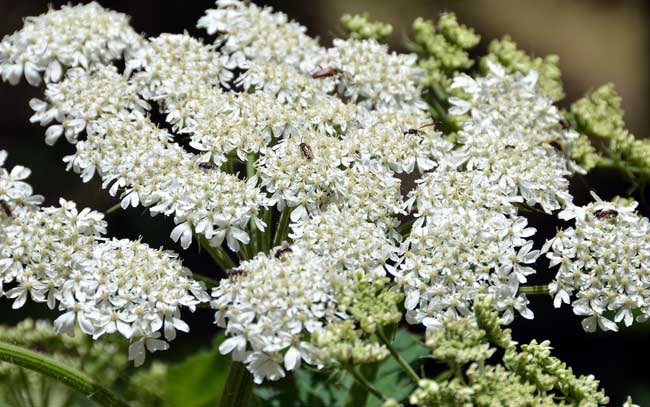
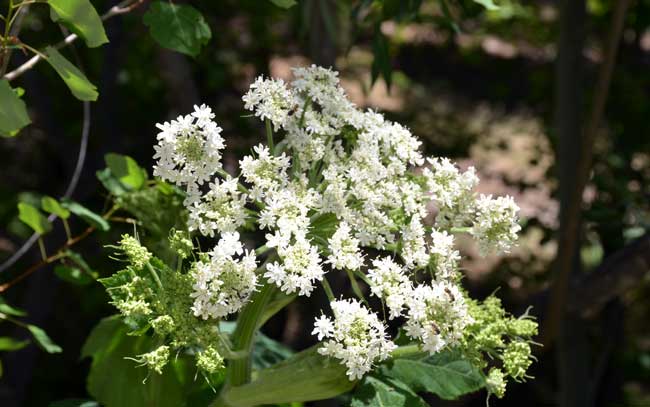
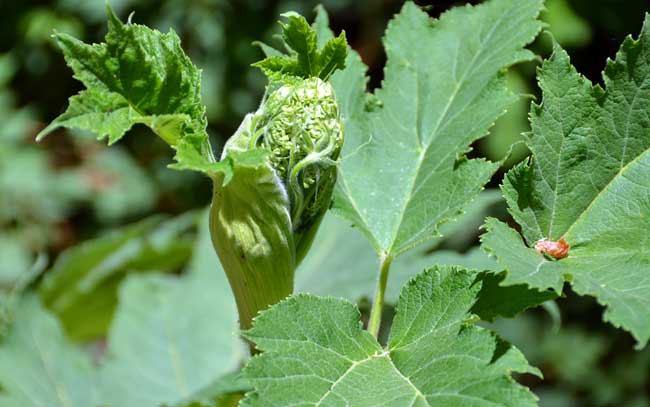
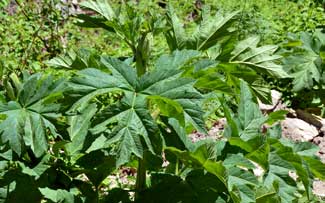
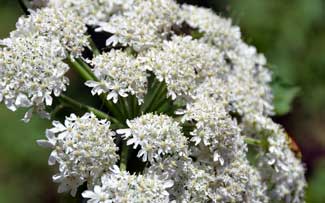
Scientific Name: Heracleum maximum
Common Name: Common Cowparsnip
Also Called: American Cow Parsnip, Cow Parsnip, Cowparsnip
Family: Apiaceae [Umbelliferae] Parsley or Carrot Family
Synonyms: (Heracleum lanatum, Heracleum sphondylium subsp. montanum, Heracleum sphondylium var. lanatum)
Status: Native
Duration: Perennial
Size: Up to 8 feet.
Growth Form: Forb/herb; huge, erect, tall, stems hollow, herbage hairy pubescence.
Leaves: Green; very large, leaf stems green, hollow, aromatic, leaves variable, coarsely toothed palmate with 3 lobes, long petioles up to 12 or more inches.
Flower Color: White; large flower clusters of small flowers (1/4 to 1/2 inch), overall clusters up to 6 or 8 inches in diameter, flat umbel with multiple small or partial umbels (umbellets), fruit; dry, splitting into 2 seeds.
Flowering Season: July to August.
Elevation: 7,500 t0 9,000 feet.
Habitat Preferences: Higher elevations along stream-banks and moist areas, ditches, meadows and wood lands.
Recorded Range: Widely distributed throughout the United States and Canada. Absent in most central and eastern southern states. In Arizona Common Cowparsnip is found in higher elevations primarily in Pima and Greenlee Counties and in the northeast part of the state.
North America & US County Distribution Map for Heracleum maximum.
U.S. Weed Information: No data available.
Invasive/Noxious Weed Information: No data available.
Wetland Indicator: Heracleum maximum is included on the USDA 2012 National Wetland Plant List as follows: Alaska, FACU; Arid West, FACW; Atlantic and Gulf Coastal Plain, FAC; Eastern Mountains and Piedmont, FAC; Great Plains, FAC; Midwest, FACW; Northcentral & Northeast, FACW; and Western Mountains, Valleys, and Coast, FAC.
FACU = Facultative Upland, Non-hydrophyte: Usually occur in non-wetlands, but may occur in wetlands.
FACW = Facultative Wetland, Hydrophyte: Usually occur in wetlands, but may occur in non-wetlands.
FAC = Facultative, Hydrophyte: Occur in wetlands and non-wetlands.
Threatened/Endangered Information: The state of Kentucky has listed Heracleum maximum (Cow-parsnip) as Endangered and the state of Tennessee has listed Heracleum maximum (Cow-parsnip) as a species of Special Concern.
Comments: Common Cowparsnip is the largest member of the Apiaceae or Carrot family in Arizona. Common Cowparsnip is relished by livestock according to Arizona Flora.
Common Cowparsnip has ethno-botanical uses identified at Native American Ethnobotany, University of Michigan, Dearborn.

